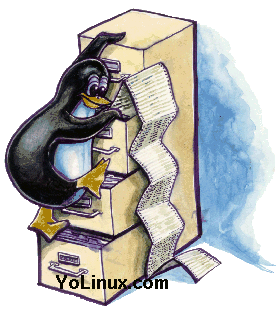
SQL:
- Oracle: Oracle currently
makes their database server software products and support fully
available on Linux. The latest trend is to support blade computing on
Linux. Oracle supports a procedural extension to SQL called PL/SQL
which adds capability and advantages when used with triggers and
database scripts. Oracle also has a full suite of development tools as
well as remote access administration tools. (Free trial download)
- Oracle Products Documentation - Table of Contents
- Oracle Professional magazine
- Oracle on SUSE
- IBM DB2 universal database for Linux: This is IBM's flagship database used in large enterprise data centers. (Free trial download)
- DB2mag.com - DB2 Magazine
- IBM/Informix - Informix introduced many of the latest database technologies and was considered the most advanced. They were also a case study in poor marketing and were eventually purchased by IBM to save themselves from going under. It may also save IBM from falling too far behind. Informix for Linux is now available from IBM.
- Borland Interbase - FireBird (now open source and called FireBird)
- Empress: Embedded Database
- Adabas (from Germany)
- MIMER SQL DBMS - ISO PSM standard used for stored procedures.
- Clustrix - highly parallel, distributed, scalable and fault tollerant SQL database for big data applications.
- Pervasive - SQL 2000 server database and and SDK. Supports JDBC, ODBC
- MySQL: (commercial extensions to the open source MySQL database)
- DBshards - distributed query, sharding and scaling for MySQL. Includes drivers for Java, PHP, Python, Ruby.
- Raima for Linux - distributed database with mirroring, replication, partitioning. SQL, low level C/C++ and Labview APIs.
- Sybase for Linux
Analytic DB:
Analytic stores are databases (usually SQL) for large datasets used for reporting and analytics where columnar optimization and compression are important.- HP Vertica - column oriented analytic database for fast queries against a large data wharehouse. Nothing shared architecture for scalability. Runs on a distributed grid of servers.
- Teradata Aster: SQL/map reduce big data analytic database. Structured and unstructured data.
- IBM Netezza - Database appliance with an asymmetric massively parallel processing architecture using FPGAs to support computation.
- XtremeData - Massively scalable distributed SQL database.
- Teradata - distributed shared nothing architecture for massive data stores.
Non-SQL DB:
Not just SQL databases. Not constrained to a fixed table schema. Distributed and scalable.- FairCom: C-Tree, Database server and Server SDK - file management, ISAM, ODBC multi-threaded API. Full source code.
- Solid (from Finland)
- Cache - They brag about speed and their widespread use in healthcare.
- Oracle: Berkeley Db - small tight and often used in embedded systems.
- HDFgroup.org: Hierarchical Data Format (HDF) - large file based data store for complex data collections. Used by NASA to organize, store, discover, access, analyze, share, and preserve Earth observation data.
- DBMaker: SQL database. Supports ODBC, XML, COBOL, C++, Visual Basic, Delphi, Perl and PHP. Used to add database functionality to software.
- Gemfire: VMware elastic in-memory data store
Other:
- OpenLink Software: Virtuoso - SQL, XML, WebDAV, SOAP, WSDL, ODBC, JDBC web services, middleware products
SQL:
- MySQL - Official Home Page
- YoLinux Tutorial: MySQL and Linux - Installation, configuration, use and administration.
- MySQL.com: Manual
- PHP and MySQL - W.J.Gilmore
- InfiniDB - scalable database engine for data warehousing and analytic store. Column-oriented DBMS plugin for MySQL. Designed for fast queries against large data stores. Community and commercial editions.
- InfoBright - MySQL based column-oriented relational database focused on computer generated data (web logs, network logs, sensor data). Sold as a bundled hardware/software appliance. High availability, self tuning, backup/restore.
- Percona Server - fully compatible, enhanced, open source drop-in replacement for MySQL. Also have DB backup and cluster software.
- MariaDB - enhanced MySQL fork
- PostgresSQL - included on Redhat distro
- YoLinux Tutorial: PostgreSQL and Linux - Installation, configuration, use and administration.
- Drizzle - Streamlined MySQL with features stripped (no views, no triggers, no stored procedures, no ACL, ...) to support massive concurrency
- SQLite: Embed a SQL engine in your application. Public domain.
- VoltDB: In memory, high speed, high throughput SQL database. Uses precompiled Java stored procedures. Community GPL and commercial editions.
- SapDb - SAP released open source database
- Actian: Ingres Open Source Database
- GigaBASE: For large (Tbyte) file based databases. C++ API. Inherits most of the features of FastDB.
- FastDB: Tight integration with C++.
Java based DB Software Products:
- Apache Derby: open source relational database implemented entirely in Java. Derby is small enough to be embedded in Java applications or it can accessed in client/server mode using JDBC.
- H2: JDBC API, in-memory embedded and server modes.
- HSQLDB: HyperSQL Java Database - multi-threaded. Can be embedded within an application.
HSQL Sourceforge - MckoiDDB Distributed SQL Database: Supports transactions, triggers. GPL open source.
Other:
- GNU: gdbm - extensible hashing (clone of UNIX dbm)
- Cassandra: multi-master high speed parallel and fault tolerant data store. Open sourced by Facebook.
- Apache Spark: standalone or on Hadoop HDFS. Distributed Map-reduce data store.
- Apache HBase: Distributed fault-tolerant database used in the Hadoop framework. Uses HDFS (Hadoop Distributed Filesystem). Java
- Apache Hadoop: Hadoop framework based on Hadoop Distributed File System (HDFS) and Map-Reduce parallel distributed processing against the data store. Framework includes "Zookeeper" to support high availability through redundant services.
SQL front-ends to Hadoop:- Presto (released by Facebook, fast, ANSI SQL)
- Hive (SQL like)
- Hortonworks Stinger (a faster version of Hive)
- Cloudera Impala
- Kai: open source clone of Amazon's closed source Dynamo NoSQL cloud storage. Erlang
- Kademlia: distributed hash table for clusters.
- Hypertable: modeled after Google's "Bigtable" database.
- High Performance Computing Cluster (HPCC): LexisNexis parallel map-reduce data store. C++.
- Redis: key-value store for data structures (keys can contain strings, hashes, lists, sets. Speed comes from use of an in-memory dataset and is written in C. Supports master-slave replication, transactions.
- Memcached:
- Infinispan: in-memory. Includes JCACHE (Temporary Caching for Java)
The following are NoSQL document data stores:
- MongoDB: JSON style document storage, Supports replication and high availability, sharding, querying, map-reduce and gridFS
- Apache CouchDB: document-oriented database that can be queried and indexed in a MapReduce fashion using JavaScript. Provides a RESTful JSON API via HTTP requests. Erlang
- Apache Lucene: indexing/search of structured text data. Typically used with the Solr search platform.
- Terrastore: scalable and elastic (add/remove nodes dynamically). Based on Terracotta Java clustering technology. Google code
- OrientDB: scalable Document-Graph DBMS. JSON document import/export. Web management interface. Supports database structure, management of the schema, a subset of SQL queries (even though it is built upon graph relationships), RAW RESTful commands. Java
Graph databases store data in node based directed hypergraphs. Use a graph database if your data contains many-to-many relationships, and the primary objective is to find patterns and relationships. The following are NoSQL graph data stores:
- GraphQL: powers Facebook apps.
- Neo4j: Object oriented, disk-based transactional graph database. REST. Java.
- Apache Giraph: highly scalable
- Apache TinkerPop: framework for graph DB (OLTP) and analytics (OLAP)
- Apache Jena: Java framework for building Semantic Web and Linked Data applications. Uses SPARQL RDF semantic query language
- BlazeGraph: distributed database architecture, RDF database supporting RDFS and limited OWL inference. SPARQL. Java
- InfiniteGraph: distributed graph analytics, and parallel processes.
- HyperGraphDB: distributed, embeddable. Supports an RDF storage and API, OWL (Ontology Web Language), reasoning over hypergraphs through Prolog, XML, topic maps, ... Java
- Franz.com: AllegroGraph: graph database for RDF and the semantic web. Supports SPARQL, RDFS and Prolog. Commercial product.
The following are NoSQL XML native data stores:
- eXist-DB: Store XML data, index-based XQuery processing. HTTP interfaces: REST, WebDAV, SOAP, XML-RPC and Atom (RSS feeds). Persistent DOM storage. Java
- Sedna: ACID transactions, security, hot backup, XQuery. Java/C/PHP/Python/Ruby/Perl/Delphi/C#
- BaseX: XPath/XQuery processor, GUI front-end
- Inoflex: SqlFlex, Queryflex, 4GL, AccountFlex - Report Writer for Non-programmers. Lots of Informix like tools. Accounting systems
- Unify - J2EE enterprise application support, Shopping carts and e-commerce solutions, 4GL.
- DataModes: TM4 - Integrated data processing solution. Applications include Wholesale Distribution (mail order), Equipment Sales and Service, Manufacturing and Chemical, Pharmaceutical, Food.
- PlugSys: Max, MSP, OxBC - Connects to FoxPro, dBase, CA-Clipper. Application development for text and web applications.
- OpenLink Software: Virtuoso - Virtual Database. Derive data from heterogeneous data sources. XML based e-business solutions.
- Herrin Software - Faunix: Veterinary practice management
- EasySoft ODBC-ODBC, JDBC-ODBC bridge and SQL engine - Unix ODBC driver manager to multiple ODBC sources
- PlugSys International: MAX and MSP - Generates character based applications and dynamic web applications.
- Automation Technology: Open RDA - ODBC driver for Linux
Other and MS/Windows:
- Embarcadero - Tools for DBA's to design and manage a database. ER/Studio, GDPro, Rapid SQL, DBArtisan. - Windows only products.
- KE Software - Database and Collection Management Software. Electronic Museum, Vital Statistics, Texpress Object Oriented Database and Software Library Databases.
- YoLinux Tutorial: MySQL Workbench - Admin tool for the MySQL database (design and admin)
- YoLinux Tutorial: SQL Workbench/J - Supports many databases (admin)
- PgAdmin - Admin tool for the PostgreSQL database
- Oracle SQL Developer Data Modeler - Oracle, DB2, SQL Server (free download)
- Linux SQL Databases and Tools - by Linas Vepstas
- OASIS: Organization for the Advancement of Structured Information Systems - international consortium that creates interoperable industry specifications
- SearchDatabase.com: Links to over 4000 database sites
- GeekGirls.com: Database basics
 |
"Oracle Database 10g: The Complete Reference"
by Kevin Loney ISBN # 0072253517, McGraw-Hill Osborne If you are going to own only one Oracle reference, then this is it. It covers it all. (It's a big book) |

|
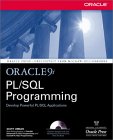 |
"Oracle9i PL/SQL Programming"
by Scott Urman ISBN # 0072191473, McGraw-Hill Osborne This is a required reference if you are going to use the full power of the Oracle database. In depth look at triggers, functions, cursors, packages, external procedures, ... This is for Oracle users who are programming Oracle within the Oracle environment. For programmers wishing to interface with Oracle from software, use Pro*C. |

|
 |
"Oracle10g: A Beginner's Guide"
by Ian Abramson, Michael Abbey, Michael Corey ISBN # 0072230789, McGraw-Hill Professional Publishing If you are lost and need a place to start, then get this book. It covers basic DBA functions, data import/export, SQL, PL/SQL, ... |

|
 |
"Complete Guide to DB2 Universal Database"
by D. D. Chamberlin ISBN # 1558604820, Morgan Kaufmann Publishers
|

|
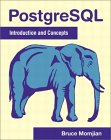 |
"PostgreSQL: Introduction and Concepts"
by Bruce Momjian ISBN # 0201703319, Morgan Kaufmann Publishers
|

|
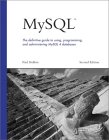 |
"MySQL, Second edition"
by Paul DuBois ISBN # 0735712123, New Riders Publishing
|

|
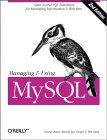 |
"Managing and Using MySQL"
by George Reese, Randy Jay Yarger, Tim King ISBN # 0596002114, O'Reilly
|

|
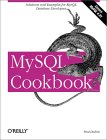 |
"MySQL Cookbook"
by Paul DuBois ISBN # 0596001452, O'Reilly
|

|
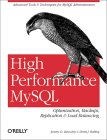 |
"High Performance MySQL"
by Jeremy D. Zawodny, Derek J. Balling ISBN # 0596003064, O'Reilly
|

|
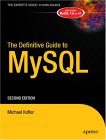 |
"The Definitive Guide to MySQL, Second Edition"
by Michael Kofler ISBN # 1590591445, APress
|

|
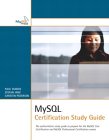 |
"MySQL Certification Study Guide"
by Paul Dubois, Stefan Hinz, Carsten Pedersen ISBN # 0672326329, Sams
|

|
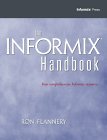 |
"Informix Handbook"
by Ron M. Flannery ISBN # 0130122475, Prentice Hall PTR
|

|
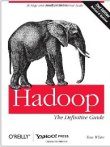 |
"Hadoop: The Definitive Guide"
by Tom White ISBN # 1449389732, Yahoo Press; Second Edition edition (October 12, 2010)
|

|
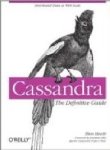 |
"Cassandra: The Definitive Guide"
by Eben Hewitt ISBN # 1449390412, O'Reilly Media; 1 edition (November 29, 2010)
|

|
 |
"CouchDB: The Definitive Guide"
by J. Chris Anderson, Jan Lehnardt, Noah Slater ISBN # 0596155891, O'Reilly Media; 1 edition (February 2, 2010)
|

|
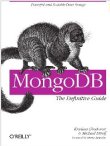 |
"MongoDB: The Definitive Guide"
by Kristina Chodorow, Michael Dirolf ISBN # 1449381561, O'Reilly Media; 1 edition (September 24, 2010)
|

|
 |
Oracle Magazine
Contains technology strategy articles, sample code, tips, Oracle and partner news, how to articles for developers and DBAs. |
Free Subscription
|


 Books:
Books:
